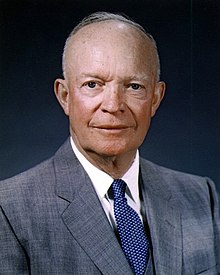📖 Presidential Profile
Comprehensive overview of leadership, policies, and historical significance
📋 Biography & Political Journey
From Military Hero to Political Leader
Dwight David Eisenhower came to the presidency with unparalleled military credentials as the **Supreme Allied Commander** who orchestrated the D-Day invasion and victory in Europe during World War II. His transition from military to political leadership was initially met with skepticism, but his administrative experience managing complex international coalitions proved invaluable in the presidency. Eisenhower’s reputation for competence and integrity made him enormously popular with American voters, who saw him as a steady hand during turbulent times.
Domestic Achievements and Infrastructure
Eisenhower’s domestic legacy centers on the **Interstate Highway System**, the largest public works project in American history up to that time. This massive infrastructure investment connected American cities and transformed the nation’s economy, enabling suburban growth and changing American lifestyle patterns. His administration also oversaw the creation of **NASA** in response to Sputnik and maintained general prosperity through what economists called “modern Republicanism” – a pragmatic approach that accepted New Deal programs while emphasizing fiscal responsibility.
Cold War Strategy and Nuclear Doctrine
Eisenhower developed the doctrine of **”massive retaliation”** and “New Look” defense policy, which relied heavily on nuclear weapons as a cost-effective deterrent against Soviet aggression. His administration successfully ended the Korean War and avoided direct military involvement in Vietnam, though he began providing aid to South Vietnam. Eisenhower’s approach emphasized **covert operations** through the CIA rather than conventional military engagement, including interventions in Iran (1953) and Guatemala (1954).
The Little Rock Crisis and Civil Rights
Eisenhower’s handling of civil rights issues proved controversial and inconsistent with his generally moderate approach to governance. While he completed the **desegregation of the military** and supported the Civil Rights Act of 1957, he was reluctant to use federal power to enforce civil rights. The **Little Rock Central High School crisis** forced his hand when Arkansas Governor Orval Faubus defied federal court orders to integrate schools. Eisenhower’s decision to federalize the Arkansas National Guard and send federal troops was seen by many as too little, too late, and his lukewarm support for the Brown v. Board decision disappointed civil rights advocates.
The Golf Course President
Eisenhower was an avid golfer who played over **800 rounds** during his eight years in office, often drawing criticism from political opponents who portrayed him as detached from presidential duties. He had a **putting green installed on the White House lawn** and would practice his swing daily. During one famous incident, Eisenhower hit a squirrel with a golf ball on the White House grounds and became so frustrated with the squirrels interfering with his putting practice that he **ordered the Secret Service to trap and relocate them**. When that didn’t work, he reportedly considered having them shot, leading aides to quietly ensure the squirrel problem was resolved through more humane means.
Humor & Jokes
Eisenhower's Golf Game
Dwight Eisenhower played so much golf, the White House lawn looked like a putting green.…
Read More →Greatest Wins
🛡️ Eisenhower Doctrine
The Eisenhower Doctrine strengthened American influence in the Middle East while preventing Soviet expansion during…
Read More →Epic Fails
🍌 Guatemala Coup and United Fruit Company Intervention
A CIA-backed coup in Guatemala removed President Árbenz, prioritizing corporate interests over democracy and sparking…
Read More →